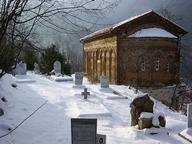Quiz Answer Key and Fun Facts
1. Towns and cities like Varna are on the Bulgarian coast. Which body of water are they on?
2. Which large river draws the line between Bulgaria and its neighbour Romania?
3. A monument was built on Buzludzha Peak in the Balkan Mountains. What did it celebrate?
4. There is an ancient theatre in the town of Plovdiv. Which empire ruled the area when it was built?
5. After a political overhaul in Bulgaria in the late 1980s and early 1990s, there wasn't much money to go around. In the capital, Sofia, people began to open shops known as kleks. Where were they?
6. Bulgaria is a secular state, but a large proportion of the population identify as Eastern Orthodox. Which of these places of worship is in Bulgaria's capital, Sofia?
7. Uzana is a resort in the Balkans located between 1,200 and 1,400 metres above sea level. Which activity is it famous for?
8. In the Rhodope Mountains of southern Bulgaria, there are structures known as 'The Wonderful Bridges'. Were they designed by an architect?
9. There is an island off the coast of Bulgaria that was formerly the home of a monastery. In 2010, archaeologists claimed to have found the remains of John the Baptist there. What is the island called?
10. Baba Vida ('Granny Vida') is a building on the bank of a river in the north of Bulgaria. Construction on Baba Vida began in the second half of the tenth century. What is it?
Source: Author
AcrylicInk
This quiz was reviewed by FunTrivia editor
spanishliz before going online.
Any errors found in FunTrivia content are routinely corrected through our feedback system.

